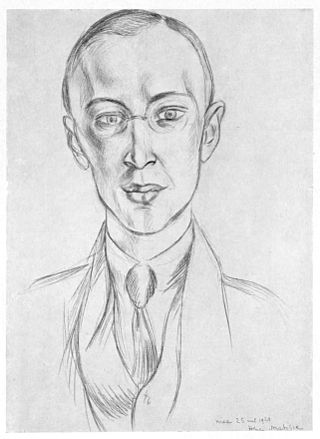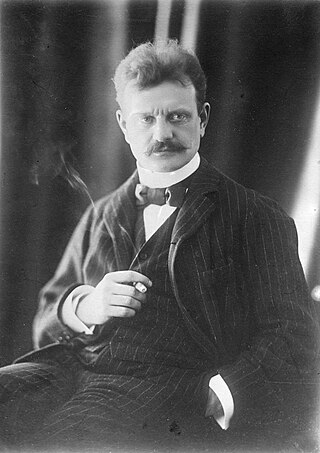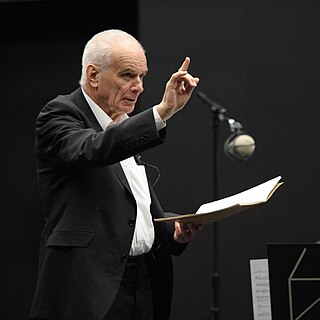The Cello Concerto No. 1 in E-flat major, Op. 107, was composed in 1959 by Dmitri Shostakovich. Shostakovich wrote the work for his friend Mstislav Rostropovich, who committed it to memory in four days. He premiered it on October 4, 1959, at the Large Hall of the Leningrad Conservatory with the Leningrad Philharmonic Orchestra conducted by Yevgeny Mravinsky. The first recording was made in two days following the premiere by Rostropovich and the Moscow Philharmonic Orchestra conducted by Aleksandr Gauk.

Sergei Prokofiev wrote his Symphony No. 3 in C minor, Op. 44, in 1928.
Symphony No. 3 was Aaron Copland's final symphony. It was written between 1944 and 1946, and its first performance took place on October 18, 1946 with the Boston Symphony Orchestra performing under Serge Koussevitzky. If the early Dance Symphony is included in the count, it is actually Copland's fourth symphony.

The Symphony No. 2 in D major, Op. 43, is a four-movement work for orchestra written from 1901 to 1902 by the Finnish composer Jean Sibelius.
The Young Person's Guide to the Orchestra, Op. 34, is a 1945 musical composition by Benjamin Britten with a subtitle Variations and Fugue on a Theme of Purcell. It was based on the second movement, "Rondeau", of the Abdelazer suite. It was originally commissioned for the British educational documentary film called Instruments of the Orchestra released on 29 November 1946, directed by Muir Mathieson and featuring the London Symphony Orchestra conducted by Malcolm Sargent; Sargent also conducted the concert première on 15 October 1946 with the Liverpool Philharmonic in the Philharmonic Hall, Liverpool, England.

The Symphony No. 5 in E-flat major, Op. 82, is a three-movement work for orchestra written from 1914 to 1915 by the Finnish composer Jean Sibelius. He revised it in 1916 and again from 1917 to 1919, at which point it reached its final form.
The Symphony No. 6 by Arnold Bax was completed on February 10, 1935. The symphony is dedicated to Sir Adrian Boult. It is, according to David Parlett, "[Bax's] own favourite and widely regarded as his greatest ... powerful and tightly controlled". It was given its world premiere by the Royal Philharmonic on November 21 of the year of composition, 1935.
The Symphony No. 3 by Arnold Bax was completed in 1929. It was dedicated to Sir Henry Wood and is perhaps the most performed and most immediately approachable of Bax's symphonies.
The Symphony No. 1 by Arnold Bax was completed in 1922 and dedicated to John Ireland. Its outer movements were based on a Piano Sonata in E♭ that Bax subsequently orchestrated, while the central movement was newly composed for the symphony.
The Symphony No. 4 by Arnold Bax was completed in 1930 and dedicated to Paul Corder. It was inspired by Bax's love of the sea and premiered in 1931 by British conductor Basil Cameron and the San Francisco Symphony Orchestra.
The Symphony No. 5 by Arnold Bax was completed in 1932 and dedicated to Jean Sibelius. It is in many ways heavily influenced by Sibelius.
The Symphony No. 6 in E-flat minor, Op. 23 by Nikolai Myaskovsky was composed between 1921 and 1923. It is the largest and most ambitious of his 27 symphonies, and uses a chorus in the finale. It has been described as "probably the most significant Russian symphony between Tchaikovsky's Pathétique and the Fourth Symphony of Shostakovich". The premiere took place at the Bolshoi Theatre, Moscow on 4 May 1924, conducted by Nikolai Golovanov and was a notable success. The symphony was as successful abroad, being heard across Europe and America; it was programmed annually for 17 seasons by Frederick Stock in Chicago.
Rustic Wedding Symphony, Op. 26 is a symphony in E-flat major by Karl Goldmark, written in 1875, a year before his renowned Violin Concerto No. 1. The symphony was premiered in Vienna on 5 March 1876, conducted by Hans Richter. Johannes Brahms, who was a frequent walking companion of Goldmark's, and whose own Symphony No. 1 was not premiered until November 1876, told him "That is the best thing you have done; clear-cut and faultless, it sprang into being a finished thing, like Minerva from the head of Jupiter". Its first American performance was at a New York Philharmonic Society concert, conducted by Theodore Thomas on 13 January 1877.
The Harp Concerto by Alberto Ginastera was composed in 1956 and first performed in 1965. It was commissioned by Edna Phillips, the harpist of the Philadelphia Orchestra. Phillips had retired by the time the work was ready to be premiered, so the solo part was played by the Spanish harpist Nicanor Zabaleta with the Philadelphia Orchestra, conducted by Eugene Ormandy. Harpist Heidi Lehwalder began performing the concerto by the 1970s and performed it with nearly every professional orchestra in the United States, sometimes more than once and sometimes several times. She established it as standard repertoire, almost de rigueur for aspiring soloists. By 1985, it was the most-performed work by Ginastera, making him one of the top earners for its publisher, Boosey & Hawkes. It has since been performed worldwide and recorded many times. In the repertoire of the harp, it is one of the ten most-performed concertos, and probably one of the five most-performed concertos.

The Symphony No. 2 by Peter Maxwell Davies was commissioned by the Boston Symphony Orchestra in celebration of its centenary, and was composed in 1980. Seiji Ozawa conducted the world premiere with the BSO on 26 February 1981 at Symphony Hall, Boston. The same forces performed the New York premiere on 4 March that year at Carnegie Hall.
The Sea, H.100 is an orchestral suite written in 1910–11 by Frank Bridge. It is also described as a symphonic tone poem. It lasts about 22 minutes.

Symphony No. 2, Ascensão (Ascension) is a composition by the Brazilian composer Heitor Villa-Lobos, written between 1917 and 1944.
Russian composer Alfred Schnittke's Symphony No. 7 was composed in 1993. It is dedicated to conductor Kurt Masur who gave its world premiere performance in New York with the New York Philharmonic Orchestra on 10 February 1994.
The Symphony No. 3 in B minor by the Ukrainian composer Borys Lyatoshynsky was completed in 1951, with the final movement themed "Peace will conquer war." The symphony was first performed in Kyiv on 23 October 1951, by the Kyiv Philharmonic, conducted by Natan Rakhlin. Criticised by the Soviet authorities on ideological grounds, the composer was forced to rework the symphony, and to remove the subtitle of the finale. The first performance of the revised version took place in Leningrad in 1955.














